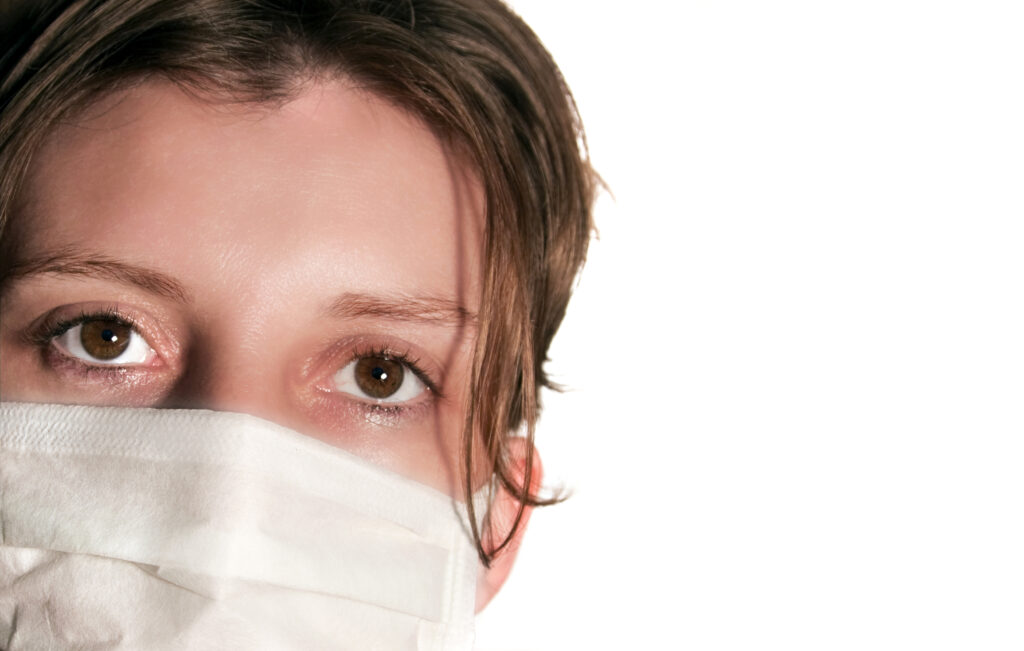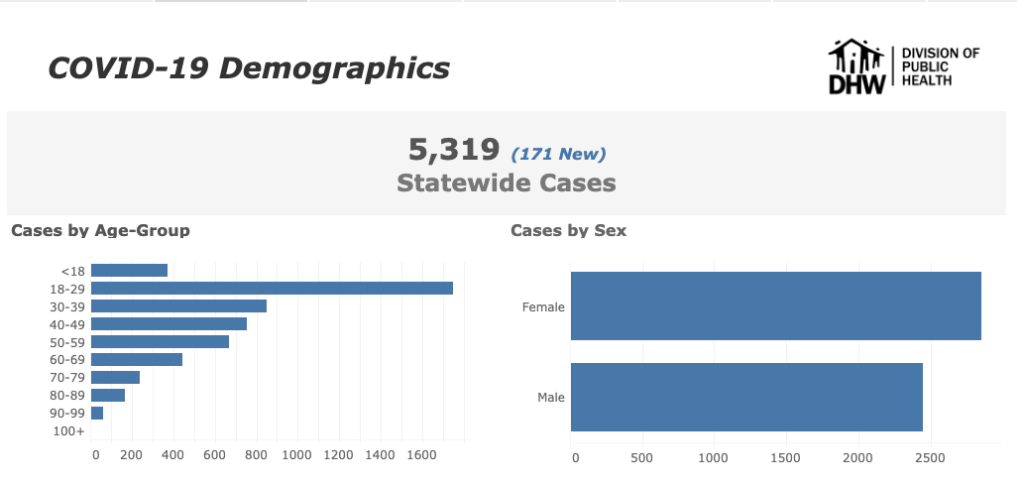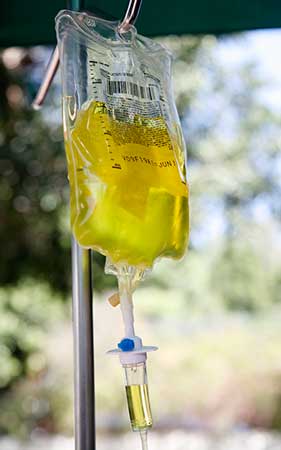[Please note, it is illegal for practitioners to provide product suggestions in public articles. Oregon and Idaho residents desiring individualized suggestions to support the immune system, can sign up for a time to consult Dr. Rodgers at www.idnatmed.com/appointment.]
The term “Long Haulers” is being used to describe patients who were infected by Covid-19 (SARS CoV-2), but never completely recovered. For many of these patients, they may not feel better for up to 5 months after initially infected.

No one yet understands why some people recover from the acute phase of a Covid-19 infection in 1-2 weeks, but others end up with chronic issues affecting multiple organs including the brain. Symptoms of Chronic Covid Syndrome (CCS), are significant. Click HERE to see a list of CSS symptoms [1],[2]
These symptoms may vary daily, making it hard to diagnose.
Some theories for the cause of Chronic Covid Syndrome include the level of initial infectious viral load, insufficient immune response that does not eradicate the virus completely, the presences of certain human histocompatibility antigens (HLA), low grade inflammation, and cellular degeneration.[3] Other theories include re-triggering of underlying co-infections, chronic mycotoxin (mold) or toxic metal burdens, or NEW exposures to mold, metals, pathogens, or other toxins after a Covid-19 infection.[4],[5],[6],[7]
Until we completely understand how some people develop long term symptoms from Covid-19, here are some suggestions to support your immune system and reduce the risk of Chronic Covid Syndrome.
Prevention: Prevent yourself from getting sick: wear a mask and wash your hands. Wear a mask over both nose and mouth when in public or in the presence of someone not of your household. You may love them, but you do not know if they are unwittingly carrying the virus. Wash your hands after being in public or handling anything not from your household.
Improve your immune system. Nutrients such as Vitamin C, Zinc, and Vitamin D have been shown to support a healthy response to viral infection.[8] When taken together, the benefits of taking these nutrients may be synergistic in supporting the fight against this virus. Nutrient levels suggested compliments of Dr. Paul Anderson, ND[9]
- Zinc has been shown to reduce viral replication, inhibit the angiotensin converting enzyme 2 (ACE2) which is responsible for viral entry into cells, and improve tissue integrity to reduce viral spread to other tissues. Doses suggested: 30—50 mg twice daily. If taken long term, copper should added at a ratio of 1 mg copper for every 15 mg of Zinc.
- Vitamin C is a water-soluble vitamin and must be taken daily to have a beneficial affect. Vitamin C is important to tissue integrity, as an antioxidant protecting cells from free radicals generated from infection and toxins, helps to reduce the severity of pneumonia, and reduces the inflammatory molecules (cytokines) that lead to the severe inflammatory storms associated with Covid-19. Since Vitamin C taken orally can cause diarrhea, the dose is dependent on what you can tolerate. Start with 1,000 mg and work up to a dose that does not cause diarrhea. Take in divided doses throughout the day. Increased doses will be needed during active infections.
- Vitamin D’s role in the immune system is as a fat-soluble hormone. This hormone has receptors on all immune cells and may reduce inflammatory storms by modulating cytokines. It also has receptors on lung cells and help improve an antiviral response. Like Vitamin C and Zinc, Vitamin D plays a role in maintaining good tissue barrier function, reducing the migration of unwanted pathogens. A simple blood test helps inform you of your Vitamin D levels. A loading dose of 25,000-50,000 IU for several days can be helpful if you don’t know your blood levels. Follow this by 1,000-5,000 IU daily.
Other nutrients important to the immune system includi Vitamin A, B vitamins, and magnesium.[10]
Additional nutrients may be helpful to reduce inflammation, support the mitochondria, reduce blood-brain-barrier leakage, and provide neurological protection.
- Natural anti-inflammatories such as fish oil or vegetarian algae oil.
- Curcumin
- Quercitin
- Co-Q 10
- N-acetyl cysteine
- B vitamins, most importantly Vitamin B12 and Vitamin B6.
- Phytocannabinoids such as Cannabidiol (CBD) or cannabigerol (CBG).
Avoid toxins. Avoid common toxins. A simple guide can be found HERE to reduce your daily exposure. Choosing hand sanitizer without fragrance is equally important.
Avoid Molds. If you have any mold exposure, please seek guidance for cleaning up the mold safely and to check if you have any levels of mycotoxins. If you have current mold growth in your home, please seek an experienced building biologist or certified mold evaluator for evaluation. Even if you feel OK, exposure to Covid-19 when you have an underlying or new infection can trigger a significant inflammatory response.
Hyperbaric oxygen may be helpful for more severe CCS patients.[11]
To address Chronic Covid Syndrome, it is important to treat each patient as an individual. The reason for this is that each patient has unique genetics, different underlying chronic medical conditions, varying toxin body burden levels from mold, toxic metals, or other co-infections. Each of these issues need to be addressed. Dr. Sara Rodgers, NMD is trained to manage chronic disease, including immune imbalance, mold infections, toxic metal evaluation/reduction, gastrointestinal imbalances, hormone imbalances, and more. If a naturopathic physician is not available in your area, look for a functional medicine provider who works with chronically ill patients.
[1] https://www.cdc.gov/coronavirus/2019-ncov/long-term-effects.html
[2] Lambert, N. J. & Survivor Corps. COVID-19 “Long Hauler” Symptoms Survey Report. Indiana University School of Medicine; 2020.
Carfi A et al. Persistent Symptoms in Patients After Acute COVID-19. JAMA. 2020 Aug 11;324(6):603-605. doi: 10.1001/jama.2020.12603.
[3] Baig, AM. Deleterious Outcomes in Long-Hauler COVID-19: The Effects of SARS-CoV-2 on the CNS in Chronic COVID Syndrome. ACS Chem Neurosci. 2020 Dec. 16;11(24):4017-4020. https://doi.org/10.1021/acschemneuro.0c00725
[4] Proal,A and Marshall T. Myalgic Encephalomyelitis/Chronic Fatigue Syndrome in the Era of the Human Microbiome: Persistent Pathogens Drive Chronic Symptoms by Interfering With Host Metabolism, Gene Expression, and Immunity. Front. Pediatr., 04 December 2018 https://doi.org/10.3389/fped.2018.00373
[5] Kritas s et al. Impact of mold on mast cell-cytokine immune response. J Biol Regul Homeost Agents . Jul-Aug 2018;32(4):763-768.
[6] Zhihua Lv et al. Clinical characteristics and co-infections of 354 hospitalized patients with COVID-19 in Wuhan, China: a retrospective cohort study. Microbes and Infection 22 (2020) 195e199. DOI: 10.1016/j.micinf.2020.05.007
[7] Chen, et.al Lancet. Volume 395, Issue 10223, 15–21 February 2020, Pages 507-513. https://doi.org/10.1016/S0140-6736(20)30211-7
[8] Name, JJ. et al. Zinc, Vitamin D and Vitamin C: Perspectives for COVID-19 With a Focus on Physical Tissue Barrier Integrity. Front. Nutr., 07 December 2020. https://doi.org/10.3389/fnut.2020.606398
[9] https://www.consultdranderson.com/nutrients-and-covid-19/
[10] Gombart AF, Pierre A, Maggini S. A review of micronutrients and the immune system-working in harmony to reduce the risk of infection. Nutrients. (2020) 12:236. https://doi.org/10.3390/nu12010236
[11] Kjellberg A et al. Can hyperbaric oxygen safely serve as an anti-inflammatory treatment for COVID-19? Medical Hypotheses Volume 144, November 2020, 110224. https://doi.org/10.1016/j.mehy.2020.110224


